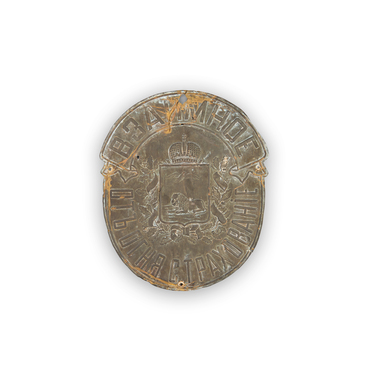In the late 19th and early 20th centuries, not only in large cities but also in small district towns like Belgorod, chiming clocks were a common feature in the living rooms of wealthy citizens. The clock demonstrated the good taste and prosperity of the owners. Wall clocks were imported to Russia from France en masse at the beginning of the 20th century and were in high demand. They had both practical and aesthetic value, and invariably attracted the attention of the guests.
The collection of the Belgorod State Historical and Local History Museum houses a Le Roi clock. The walls of the case are made of wood, and the doors are glazed. Through them, the enamel-covered dial and pendulum are visible. The white dial with intricate hands features Roman numerals. At the bottom of the dial, there is an inscription in French Le Roi à Paris, which means “The King in Paris.” On the pendulum, among the engraved floral patterns, there is an inscription R=A.
The clock belonged to Lyubov Ivanovna Ovechko, a resident of Belgorod.
Such clocks are wound with a key. There are two holes at the bottom of the dial. First, the key is inserted into the left hole and turned several times strictly to the right. Then the key is moved to the right hole and turned in the same manner until it stops. Usually, one winding was enough for a couple of weeks.
In 18th century France, Julien Le Roy, the personal clockmaker of King Louis XV, was responsible for producing clocks under the brand Le Roi à Paris, renowned worldwide for his clock mechanisms, which were considered superior in quality even to the impeccable English clocks of the time. The association with the lineage of renowned clockmakers was intended to encourage people to purchase affordable Le Roi à Paris clocks.
By the late 19th and early 20th centuries, several
German factories were involved in producing mechanical clocks under the Le Roi à Paris brand. However, the Le Roi à Paris wall clocks were
classified as affordable and accessible to the general population. Essentially,
these were mechanical clocks with spring winding mechanisms and enamel dials,
but the cases were often made from cheaper materials.


